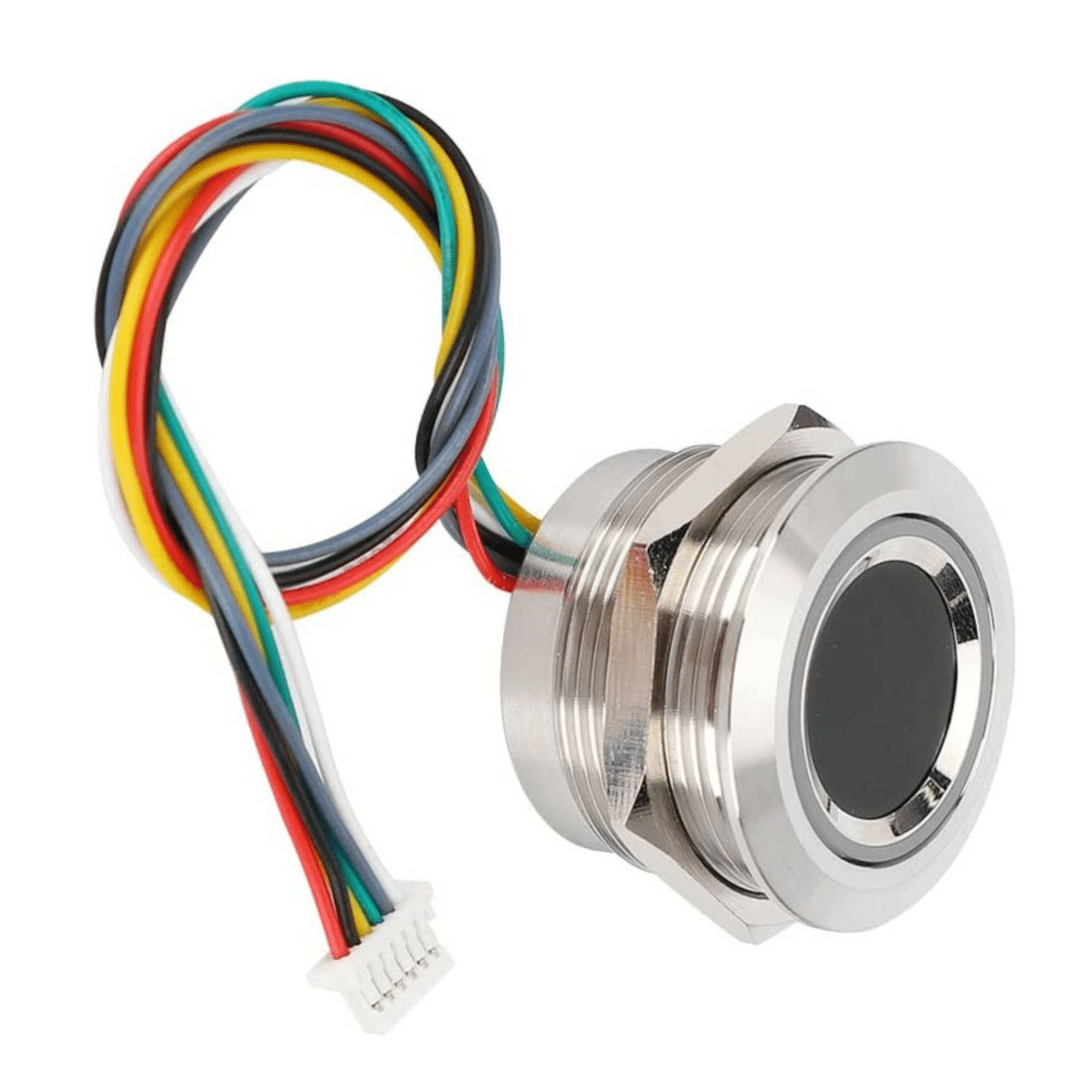A capacitive fingerprint sensor detects patterns by discharging energy on touched capacitors and offers the flexibility to adapt to various finger conditions.

Rajguru Electronics have launched R503 capacitive fingerprint recognition module featuring a new circular design with a two-color ring indicator LED control operating at DC 3.3V. According to the company’s claim, the modules can be seamlessly integrated into a wide range of final products, including access control systems, attendance trackers, safety deposit boxes, and more. The fingerprint recognition module claims to feature an integrated image collecting and algorithm chip in a single module. According to the press release issued by the company, the module offers flexibility to adapt to various finger conditions, including dry fingers, wet fingers, light texture fingerprints, and aged fingers, with a high recognition rate.
According to the company’s claim, the fingerprint recognition module supports communication via a serial interface and can be connected to a microcontroller unit (MCU) operating at either 3.3V or 5V power. The data exchange format for the module is series when communicating with an upper computer. It applies to both universal asynchronous receiver-transmitter (UART) and Universal Serial Bus (USB) communication modes. For Personal computers (PC), a USB interface is highly recommended to enhance exchange speed, particularly in fingerprint scanning devices.
Some of the key features of fingerprint recognition include:
- Interface: UART(TTL)
- Resolution: 508 DPI
- Voltage: DC 3.3V
- Fingerprint Capacity: 200
- Sensing array: 192*192 pixel
- Working current: 20mA
- Standby current: Typical touch standby voltage: 3.3V, Average current: 2uA
- Fingerprint module external size: Diameter 28 (mm)
- Fingerprint module inner size: Diameter 23.5 (mm)







How much time will it take for scanning and verification?
The image acquisition time is incredibly fast, clocking in at less than 0.2 seconds. The generation of feature points occurs swiftly, completing in under 500 milliseconds. During the power-on process, the initialization typically takes around 200 milliseconds.